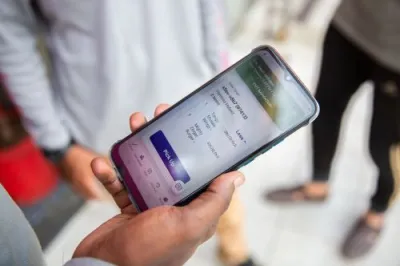Those Star-Ratings Do Matter for Financial Inclusion
This year CGAP partnered with MercadoLibre, Latin America’s largest online retailer, to assess the potential of alternative data to boost financial inclusion.
It turns out that alternative data not typically available for credit scoring, such as e-commerce data, can be used as a powerful risk predictor for underbanked and unbanked people. Features far removed from strictly financial characteristics – such as star ratings that sellers receive through MercadoLibre – can have a meaningful impact for financial inclusion in two ways:
- First-time credit assessment for customers with no formal financial history can be based on this alternative data.
- Thin financial data can be enriched for unbanked segments to better assess their credit risk.

MercadoLibre is the largest e-commerce ecosystem in Latin America. It offers a wide range of services to sellers and buyers, including marketplace, payments, advertisements and e-building solutions. It operates in 13 countries, including Argentina, Brazil, Chile, Colombia, Mexico, Peru and Venezuela. Based on unique visitors and page views, MercadoLibre is the market leader in the major countries where it has a presence.
2015 full year numbers:
- 144.6 million registered users by the end of the year
- 128.4 million items sold through MercadoLibre, a growth of 26.8% year-over-year, resulting in a gross merchandise volume of $7.2 billion.
- 80.4 million total payment transactions, accelerating to 73.7% compared with a year ago, leading to a full-year total payment volume of $5.2 billion.
- Consolidated net revenues for the full year were $651.8 million, a 17.1% increase year-over-year.
To assess the power of alternative data, a bivariate analysis was run using data from MercadoLibre. We chose a segment of more than 12,000 higher-activity sellers in Argentina to study and collected their credit scores. Even though credit scoring is almost universal there due to the high penetration of unique IDs, around 50% of individuals in Argentina have very “thin” information. And almost 40% of the active sellers under analysis do not have an open credit in the market, hinting at the huge opportunities of the unbanked markets.
For the analysis, a few variables about sellers available on the marketplace – such as customer feedback – were classified into four groups (these groups of variables are not exhaustive and several more could be found – more than 1,500 variables are available through the platform). The results? The four groups of variables displayed significant correlation with the sellers’ credit scores, suggesting the value of such e-commerce data for credit scoring.
The companion slide deck of this research presents the results in detail. The findings make a strong case for pilots with unbanked segments in order to assess how easily this potential can be tapped in practice. Pilots could be aimed at:
- Using alternative data with good predictive power to assess the creditworthiness of customers with no financial information. This would essentially turn them from invisible to visible, especially in markets where credit bureaus have limited reach.
- Enriching existing models with these newly acquired data points. This is particularly true in credit scorecards that are built using limited information and strict financial data.
At a more human level, these findings about star ratings imply that financial behavior is not radically different from other behavior spheres. Sellers who offer high-quality customer service—that is, that they deliver on time or pack items with care—are less inclined to embark in amassing debt to unsustainable levels. Does this sound intuitive?




Comments
Interesting insights. Would
Interesting insights. Would appreciate validation of this data against recent evidence showing that half of new reviews of Amazon, for example, are 'incentivized.' (MIT CSAIL, here: https://twitter.com/MIT_CSAIL/status/778005007471775744)
Thanks Data enthusiast for
Thanks Data enthusiast for your comment. From what I understand Amazon do not allow incentivized reviews unless the reviewer disclose the fact that they are getting something in return. Also -according to Amazon- these type of reviews were only a fraction of the millions of reviews in their platform.
The newly updated customer review policy only allows incentivized reviews as part of their Vine program, which is managed by Amazon and not by sellers. Here’s a link to their update on customer reviews. https://www.amazon.com/p/feature/abpto3jt7fhb5oc
Many thanks, Jacobo
Add new comment